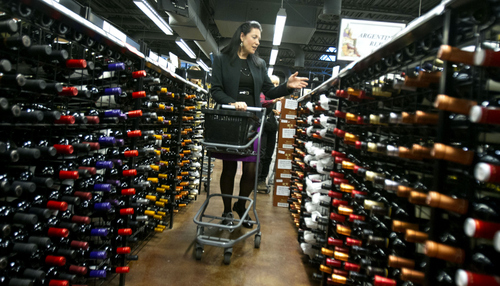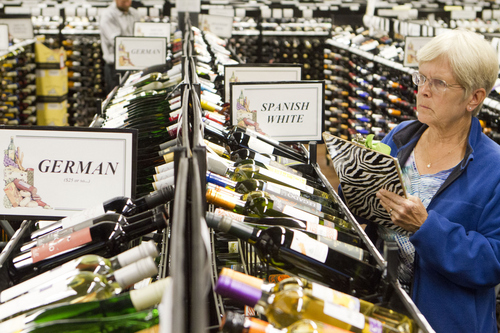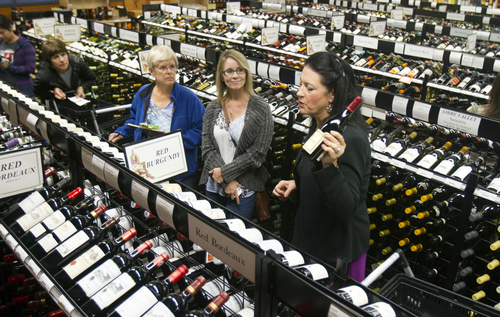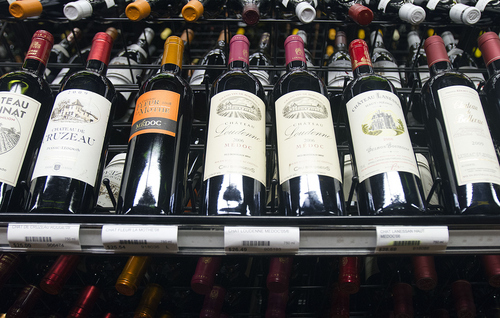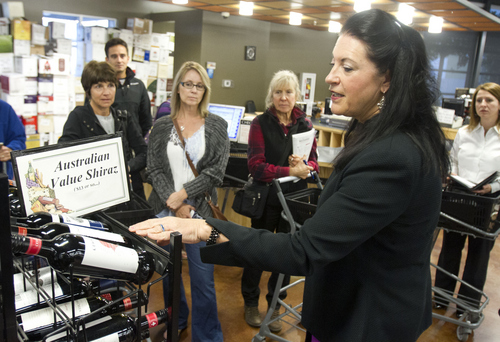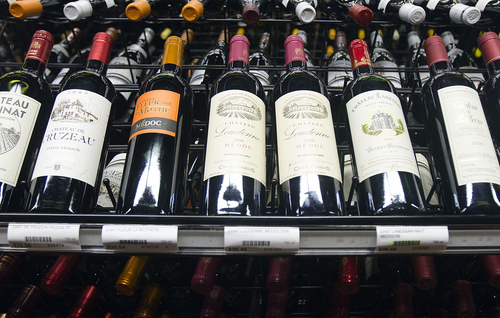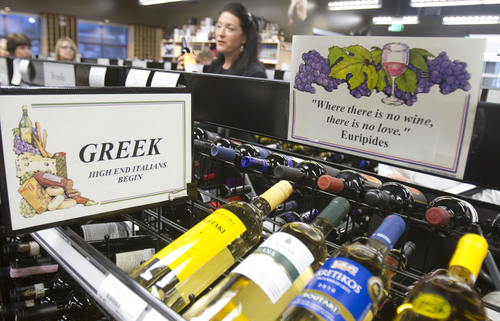This is an archived article that was published on sltrib.com in 2013, and information in the article may be outdated. It is provided only for personal research purposes and may not be reprinted.
The Salt Lake City wine store at 280 W. Harris Ave. is 12,000 square feet in size and boasts more than 5,000 bottles of wine and spirits.
For those who imbibe, those numbers can be exhilarating and a bit overwhelming, said Sheral Schowe, owner of Wasatch Academy of Wine.
"So many people say to me that they are intimidated by the wine store," said the certified wine educator. "People go in and get that 'deer in the headlights' look and say, 'Where do I start?' "
It's the reason she started "A Walk Through the Wine Store." During the 90-minute class, offered through University of Utah's Lifelong Learning program, Schowe deconstructs the store into easily consumable parts, helping consumers locate what they need, find deals and possibly uncover a unique bottle that will impress fellow vinophiles.
"People like to complain about the Utah liquor stores and the state system," she said, but the wine stores have more options "than you can find in any boutique store" in another state. The key is knowing how to shop.
Finding deals • When you first walk into the store, you'll see wine bottles in boxes that are stacked three or four high. Don't walk past, assuming someone has shirked their restocking duties. "These are the best deals in the state," said Schowe. The wine store on Harris Avenue will have all the sale wines, while smaller stores will have a sampling of the bargains. If you see something you like, buy a whole case, she said. One example: Root 1 Carmenere from Chile for $9.99 — $3 off the regular price. Many years ago, Carmenere was a famous grape varietal grown in Bordeaux. But the French phased it out because it was susceptible to disease. Someone, however, discovered that it thrives in Chile.
One store, two sections • Before you start wandering aimlessly, consider what you want, said Schowe. Are you looking for a specific grape varietal: chardonnay, merlot or cabernet sauvignon, for example? Or do you want something from a specific country? Italian to match your pasta, French to go with cheese? Knowing this will help you shop, as one side of the store displays wines by varietal; the other side has wines by country.
The varietal section is about 85 percent wines from California, Washington and Oregon, Schowe said. In the country section, there are wines from all over the globe, from Old World wine countries including France, Italy and Germany to the New World locales of Australia, Argentina and Chile. There's also a smattering of other countries from South Africa to Greece. Some of the best deals come from these newer wine countries that lack the name recognition of the more traditional places.
Prices • Wines in both sections are stocked from least to most expensive. And the cheapest wine in some categories happen to be some of Schowe's favorites, such as the South African Pinotage for $8.99. "It has flavors of roasted nuts and coffee" that are lacking in more expensive bottles, she said. The least expensive cava — sparkling wine from Spain — is pretty good, too. "The state stores don't have all the rip-off prices people think," said Schowe.
Labels • No matter which section you land in, pay attention the terms on the labels. "Estate-bottled," for example, is a term used to indicate that the people who made the wine also grew the grapes on their own land. It's generally a good sign for taste — but exacts a higher price. The word chateau has the same meaning on French wines.
The term Appellation d'Origine Controlee or controlled designation of origin is common on European wines. It verifies that the wine has been made from grapes grown and harvested in a specific region and following specific standards. The term "Reserve" is simply a marketing term that doesn't carry much meaning. Although, Schowe said if a wine maker has two similar wines, the one with "reserve" is probably a little better. Always turn the bottle over and read the fine print on the back, as there are usually a host of other facts that may help you decide if the wine is worth buying. If it is a blended wine, it may list what grapes were included. It may explain how it was fermented, if it's Kosher or if the vineyard used organic standards.
Special occasions • At the end of each row of bottles, wine store employees set up "focus areas" featuring different wines of interest. This time of year, consumers might find Halloween-themed wines. Closer to Thanksgiving and Christmas, there likely be wines that go well with your holiday turkey or ham. Don't be fooled by the placement. Just because they are on the end racks, doesn't mean they're on sale or particularly good.
Gift giving • The custom wood shelving along the back wall is where to go if you are starting a wine collection or "buying a gift for someone who knows wine," said Schowe. Prices in this section vary. There are bottles in the $80 range all the way up to the most expensive bottle in the state: a 1988 Chateau Latour for $1,246.
Half bottles • For those who don't want to commit to a whole bottle, the state wine stores have generous collection of half bottles or "splits" that start at $5. Schowe says they're a great way to experiment with a new wines, without investing a lot of money.
Interesting finds • There are dozen of unique finds among the 5,000 bottles so don't be afraid to seek advice from an employee, who has likely tasted all the wines. On our visit, store manager Eric Davey singled out the Heger Pinot Noir from Germany. It's a red wine from a country best know for its whites, but it's "a steal" at $22.51, he said.
Twitter: @kathystephenson
facebook.com/kathy.k.stephenson



